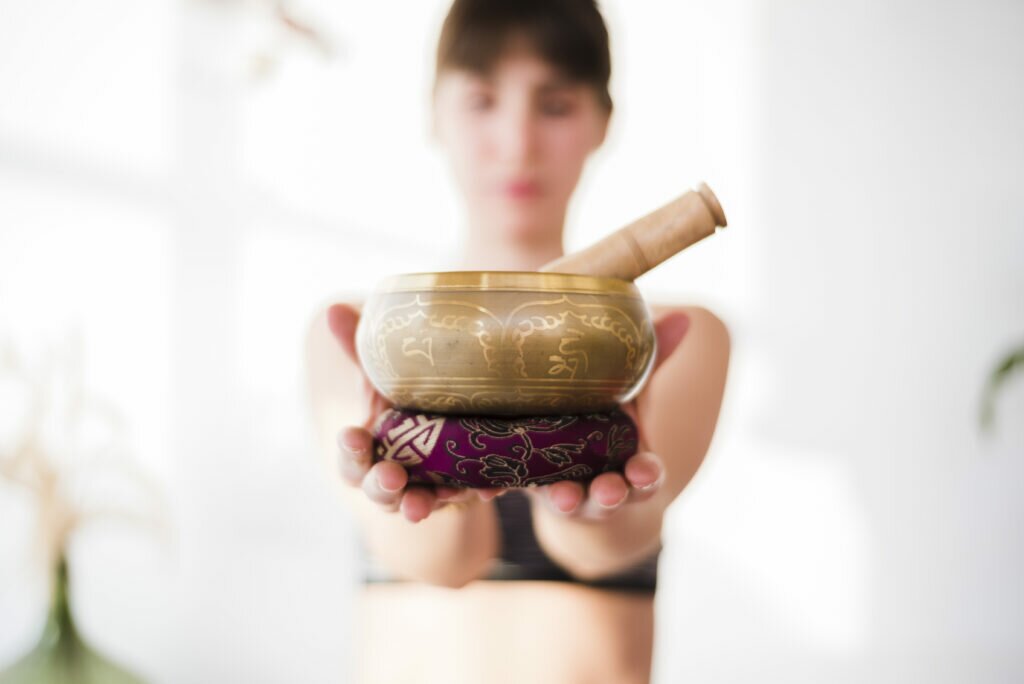Ayurveda, often referred to as the “science of life,” is an ancient holistic system of medicine that originated in India thousands of years ago. It is based on the belief that our well-being is dependent on the balance between our mind, body, and spirit. Ayurveda emphasizes the use of natural remedies, diet, lifestyle practices, and herbal treatments to promote health and prevent diseases. In this article, we will explore the principles of Ayurveda and how they can help us achieve optimal well-being.
Principles of Ayurveda: The Ancient Science of Life
Ayurveda, a Sanskrit word meaning “knowledge of life,” is a comprehensive system of medicine that takes a holistic approach to health and wellness. It considers each individual as a unique entity with a distinct body constitution and aims to restore balance and harmony to promote overall well-being.
The Vedas: Ancient Scriptures and Illuminated Sages
Picture this: we’re transported back to ancient India, where the wise and enlightened sages roamed the land. These incredible individuals had a deep understanding of life and its mysteries. They tapped into their inner wisdom and experienced profound realizations, which they shared with the world through sacred texts called the Vedas. It was within these ancient scriptures that Ayurveda found its earliest origins.
The Birth of Ayurvedic Medicine
The term “Ayurveda” itself holds a beautiful meaning—it translates to “the science of life.” Isn’t that something? It’s like a roadmap to living our best, healthiest lives. The teachings of Ayurveda first appeared in written form around the first millennium B.C. Yep, you heard it right—over two thousand years ago! The earliest significant writings on Ayurveda, known as the Charaka Samhita, shed light on the principles of this ancient medical system.

But wait, there’s more! Around a century later, another remarkable text came into existence—the Sushruta Samhita. This one focused on the surgical aspects of Ayurveda. Can you believe it? Even back then, they were practicing some form of ancient surgery. Impressive, right?
Fast forward a few centuries to the 7th century A.D., and we encounter the Asthanga Hridayam. Now, this compilation is a gem! It brought together the knowledge and wisdom from the previous writings, creating a well-organized and comprehensive guide to Ayurveda. It’s like the ultimate playbook, my friends!
Ayurveda: Spreading Its Wings
Now, here’s where things get really exciting. Between the 5th century B.C. and 5th century A.D., Ayurvedic principles spread like wildfire across the globe. They journeyed far and wide, reaching places like China, Tibet, Persia, Arabia, Egypt, Greece, and Rome. It was like Ayurveda went on a world tour! And you know what happened? It blended with local traditions and cultural practices, giving rise to various new teachings and natural medicine systems.
That’s why Ayurveda is often referred to as “the mother of all medical systems.” It laid the foundation for the development of countless other holistic approaches to health and well-being. Talk about making a mark on the world!
The Ayurvedic Perspective: Healing the Holistic Way
Now that we’ve set the stage and taken a peek into Ayurveda’s historical roots, let’s dive into the heart of this incredible science. Ayurveda, my friends, is all about a holistic and straightforward approach to healing. It’s like peeling back the layers and discovering the core of our health issues.
You see, Ayurveda aims to uncover the underlying causes of our ailments. It goes beyond treating the symptoms and seeks to address the deeper imbalances within our bodies and minds. It’s like shining a light on the root causes, whether they stem from our diet, lifestyle, genetic predispositions, negative thoughts, or energetic imbalances.
Ayurveda teaches us to look at the bigger picture—the interconnectedness of our mental, emotional, and physical well-being. It encourages us to embrace conscious prevention and adopt healthy lifestyles. After all, it’s much easier to nip a problem in the bud than to let it grow into something more serious. Did you know that a whopping seventy percent of ailments can be traced back to an incorrect diet? That’s right—our food choices play a significant role in our overall well-being.
So, my friends, successful Ayurvedic therapy relies on making the right dietary choices and being open to changing our habits. It’s about cultivating the right attitude, embracing strong willpower, and having the determination to tackle our health issues head-on. These qualities form the foundation of our journey toward well-being.
The Ayurvedic Approach: Balancing the Elements
Now that we understand the essence of Ayurveda, let’s explore how it views the human body and its intricate workings. According to Ayurveda, we are not just a collection of organs and systems—we are a unique and interconnected blend of body, vital energy, mind, and soul. It’s like we’re part of this grand symphony of life!

Unlike conventional medicine which often focuses solely on symptoms, Ayurveda takes a more profound approach. It looks beyond the surface and delves into the causes of our psychosomatic imbalances—the imbalances that precede every disease. You see, a symptom is merely a signal, a warning sign that something’s amiss within our bodies. Ayurveda seeks to restore the natural state of harmony, both mentally and physically.
By following a tailored program that includes the right diet and the regular use of herbs, we can bid farewell to various health problems. Skin diseases, respiratory issues, digestive disorders, migraines, obesity, blood circulation problems, and gynecological difficulties—they can all be addressed through Ayurveda. Even conditions like spine, joint, and muscle ailments, insomnia, fatigue, and stress can find relief through this ancient science.
The Core Principles: Unveiling Your Unique Constitution
So, here’s something fascinating—each one of us is born with a unique combination of biological principles known as doshas. In Ayurveda, we’ve got three doshas: vata, pitta, and kapha (or wind, bile, and phlegm, as they’re referred to in Tibet). These doshas form our individual genetic code and contribute to our mental and physical characteristics. It’s like our own personal blueprint!
Throughout our lives, the balance of these doshas may shift due to various factors. It’s what Ayurveda calls “vikrti”—deviation from our original state, known as “prakrti.” These imbalances affect our overall health, both physically and mentally. They’re influenced by our thoughts, emotions, relationships, diet, daily routines, lifestyle, seasons, and environment. It’s a delicate dance between these three life principles, and understanding how they operate allows us to recognize their manifestations in different psychosomatic types.
The Path to Wellness: Listening to the Body’s Wisdom
Now, you might be wondering, what causes disease? Well, my friends, health is all about maintaining a harmonious and balanced functioning of our bodies. It’s like being in sync with ourselves and the world around us. Our bodies are incredibly intelligent, you know—they provide us with signals and messages, guiding us toward what’s right and what’s not.

Every emotion we experience is like a biochemical response to a deeper issue lurking beneath the surface. It’s our body’s way of communicating with us. But here’s the thing—the regular guy, the average Joe out there—often ignores these signals. Our minds, filled with desires and wishes, tend to prioritize their fulfillment over the well-being of our bodies. And that’s when trouble starts brewing.
Most ailments originate in the restless, imbalanced, and undisciplined mind. It’s full of wrong ideas and desires that lead to suffering, disease, and pain. Only after this stage, my friends, do these primal impulses manifest on the physical level. They find their way into our digestive system, disrupting the delicate balance of the vata-pitta-kapha principles. And that’s when the trouble spreads, affecting our bodily tissues, energy, and overall well-being.
So, there you have it—the journey into the incredible world of Ayurveda. It’s a science that has stood the test of time and continues to offer profound wisdom for a healthy and fulfilling life. Remember, folks, our well-being is within reach if we listen to our bodies, embrace a holistic approach, and find harmony in our minds, bodies, and souls. Until next time, stay healthy, and stay happy!
FAQs
1. Is Ayurveda a religious practice?
Ayurveda is not a religious practice. It is a holistic system of medicine that focuses on promoting health and well-being through natural means.
2. Can Ayurveda cure chronic diseases?
Ayurveda takes a comprehensive approach to chronic diseases by addressing the root cause and supporting the body’s innate healing abilities. It can provide relief and improve quality of life in many cases.
3. Can Ayurveda be practiced alongside conventional medicine?
Yes, Ayurveda can be practiced alongside conventional medicine. It is important to consult with qualified healthcare professionals and integrate both approaches for a holistic and personalized approach to health.
4. Are Ayurvedic herbs safe to use?
Ayurvedic herbs, when used under the guidance of a qualified practitioner, are generally safe. It is important to source high-quality herbs and follow recommended dosages.
5. How long does it take to see results with Ayurveda?
The timeline for experiencing results with Ayurveda varies depending on individual circumstances. Some people may notice improvements quickly, while others may require more time and consistent practice for lasting benefits.
Disclaimer: The information provided in this article is for educational purposes only and does not constitute medical advice. Consult with a qualified healthcare professional before making any changes to your diet or lifestyle.

